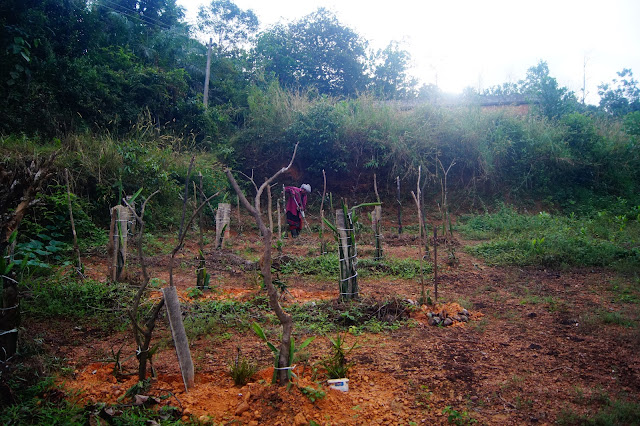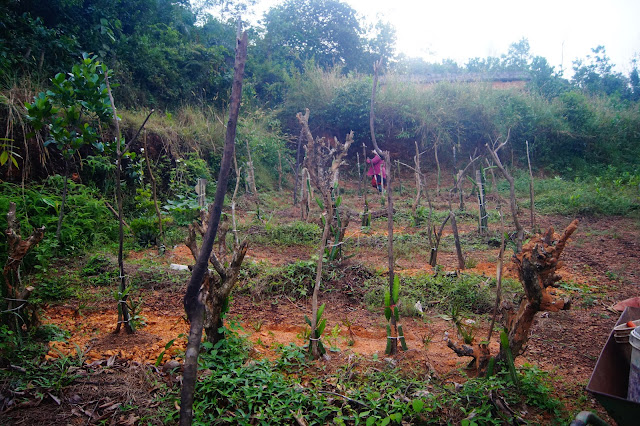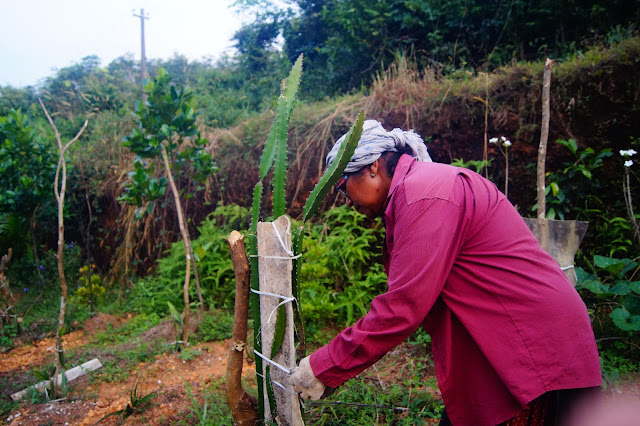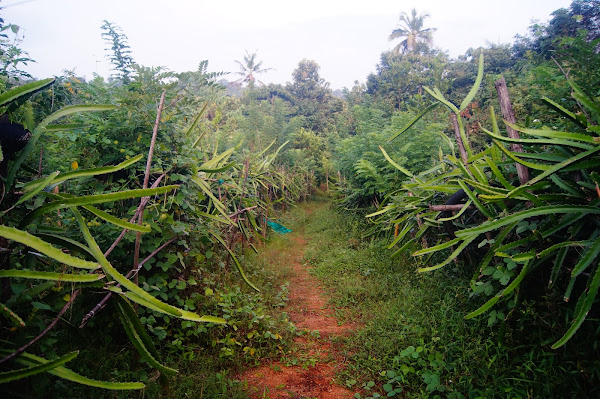Learn dragon fruit cultivation with me !
I have always had a soft spot for cacti. There’s something about them—their quiet strength, the way they survive in tough places, and bloom without asking for too much. Years ago, during a visit to Thrissur, I picked up a small dragon fruit stem. I didn’t buy it for its fruit, or because I wanted to start a farm. I bought it because it was a cactus, and I simply loved how it looked— just a tiny cactus.
Life, however, had other plans.
Soon after, I had to relocate to my mother’s ancestral land. I carried that little stem with me, hoping to find a quiet corner to plant it—a home for the cactus I had grown fond of. And that one cutting became the beginning of a farm, a way of life, and something I now share with others through Liz Pepper Gardens
This is my way of teaching you what I’ve learned—not just how to grow dragon fruit, but how to trust the process, work with your hands, and let time do its magic.
Starting with the Soil
When I began, I didn’t have a tractor or fancy equipment. I cleared a bit of ground with the tools I had—mostly by hand. It was important for me to feel the earth, know the land, and understand how water moved through it. Dragon fruit doesn’t like too much water. It prefers slightly raised beds or sloped land where excess water can drain off easily. That’s the first thing I took care of.
I used what I trusted—kadala punnakku (groundnut cake) and bone meal powder. These, mixed with compost or dried cow dung, give the soil just enough strength to hold the plant without overpowering it. I’ve always believed that plants are like children—feed them gently, don’t overdo it, and they’ll grow up healthy.
A cutting full of potential
I began taking cuttings from the original plant once it matured. Each time I cut a new stem, I treated it like a seed of possibility. I chose only healthy stems, dried them in the shade for a day or two, and treated them with antifungal powder. I’ve lost cuttings to rot in my early days—so I learned, slowly, how to protect them.
For our customers now, we do the same. Every cutting that leaves our garden is selected, cleaned, dried, treated, and marked with arrows. That arrow matters—the bottom arrow must go into the soil, even if there are roots on the top side. Many people get confused, but those upper roots are support roots. The real growth begins from the base. If we are sending you rooted plants then there is no confusion, simply plant the rooted area into the soil. (Incase of any doubts, do contact us here or on our social media)
Strong pillars to climb
Dragon fruit is a climber, and it needs something to lean on. I tried many things in the beginning—wooden posts, coconut stumps—but I settled on bamboo and my most favourite live pillar -- Konna. These are light, easy to manage, and it suits the kind of natural farming I do. We tie the plant gently as it grows upward, and when it reaches the top, we let it fall like an umbrella. That’s when the real fruiting begins.
I space the plants well—at least a couple of feet apart. This gives them room to breathe, to spread, and to dry out after rain. Poor spacing causes diseases. I’ve learned this by watching, walking among my plants, and noticing how they behave.
Water like a cactus lover
Dragon fruit is a cactus—it doesn’t need daily watering like vegetables. I water only when the top soil dries. In the rainy season, I don’t water at all for days. This plant thrives when it’s not suffocated.
Each day, I walk through my garden, check the firmness of the stem, the colour, the smell of the soil. These small signs tell me what the plant needs. I believe farming is more about watching than doing.
It took just seven months---- and I saw the first flower bloom. And when the fruit came, it was like holding a small miracle. The taste was gentle— sweet, soft, and so fresh. Over time, the plant gave more. The garden filled with colours—pink fruit, white flowers, green arms growing in all directions.
Sending you a bit of our garden
We now send our dragon fruit cuttings across places. Each one is wrapped with care, marked, and shipped with clear instructions. Still, I tell everyone—open the package soon, plant it with love, and don’t panic if it takes time. Once they find their place, they grow strong.
Because they’re living things, we can’t accept returns. But we are always ready to answer your questions, guide you, and learn with you.
This plant gave me strength when I had to begin life again. It taught me that slow things matter. That a cactus, if given a home, can give back with beauty and abundance. It reminded me that even when life shifts you from one place to another, something new can take root.
So, if you’re someone thinking of growing dragon fruit—whether for a garden or a farm—I hope my story and this guide help you. I hope you plant it with curiosity, care and some patience.


















Comments
Post a Comment